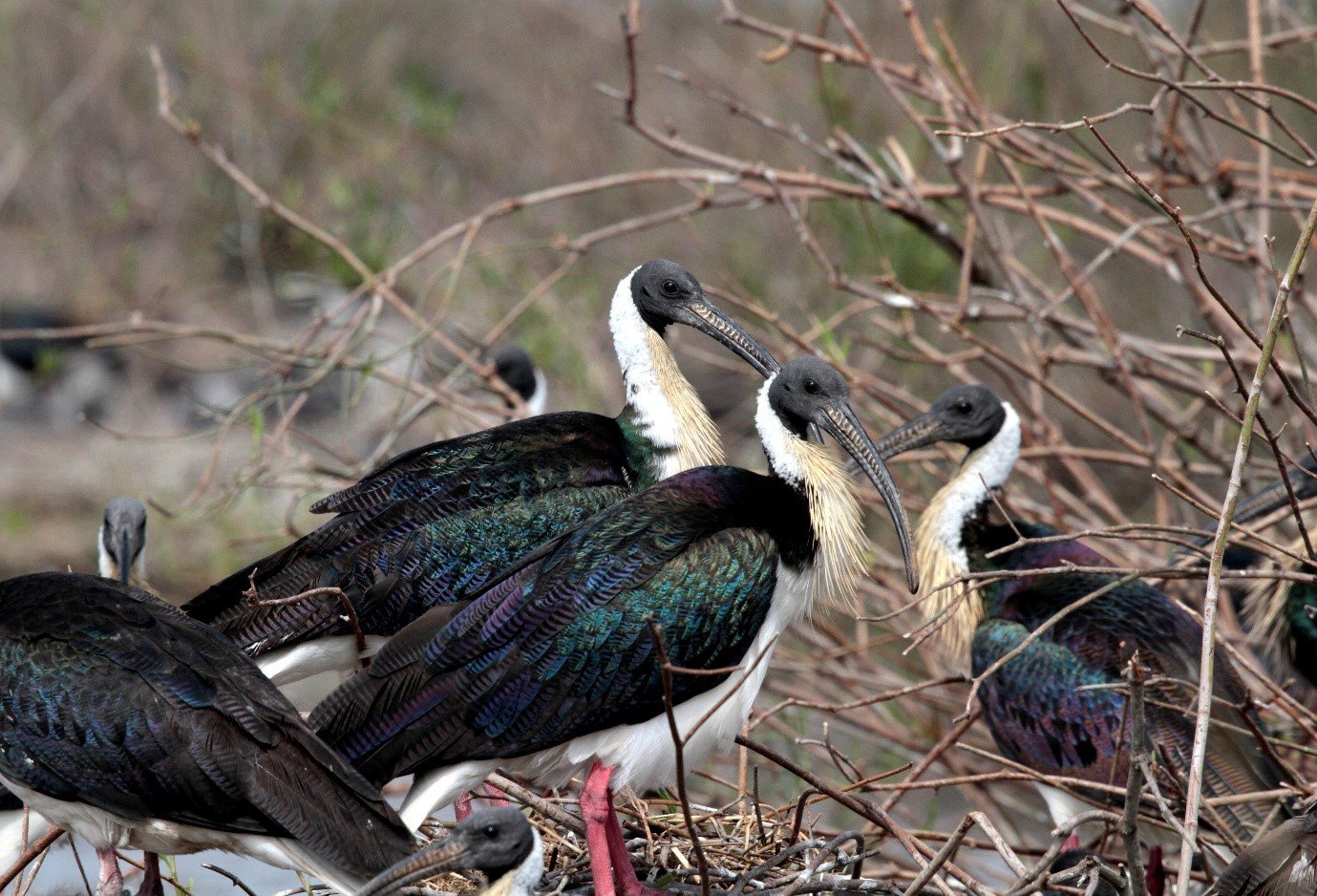Generalists are the most urban-tolerant birds
We used a novel method, integrating large datasets, to identify the ‘urbanness’ of Australian birds.

Clearly, the Noisy Miner has successfully adapted to urban environments – even sampling the local beverages…
Image: Corey Callaghan© Australian Museum
Clearly, the Noisy Miner has successfully adapted to urban environments – even sampling the local beverages…
Image by Corey Callaghan (c)
Why are Australian White Ibis – better known as the “Bin Chicken” – a totem for modern Australia? Nearly everyone in Sydney could pick out a Bin Chicken from a lineup. But what about the Bin Chicken’s cousin? Wait, the Bin Chicken has a cousin? Yes. For the non-birders reading this, the Australian White Ibis is closely related to the Straw-necked Ibis – a species common to drier parts of Australia. These two species are closely related, yet only one species has shown an aptitude for living in Australia’s cities. Similarly, other species, like the Noisy Miner, have great ability to not only survive in urban ecosystems, but thrive in them.

Straw-necked Ibis in a breeding colony in central NSW
Image: Corey Callaghan© Corey Callaghan
Straw-necked Ibis in a breeding colony in central NSW.
Image by Corey Callaghan (c)
Recent joint research between UNSW Sydney’s Centre for Ecosystem Science and the Australian Museum Research Institute’s bird team, set out to do just that. Much of the previous research addressing this question has focused on a priori grouping of species based on their response to urbanization. Researchers group birds into urban avoiders, urban adapters, and urban exploiters, for example. Sometimes species are grouped based on whether or not they are found in urban areas.
We extended these previous methods by using a species-specific approach to assign individual species ‘scores’ based on their response to urbanization. To do this, we integrated broad-scale eBird data with VIIRS night-time lights data. We then looked at a species-specific distribution in response to the night-time lights data – a continuous proxy of urbanization. A species’ urban score was defined as the median of their distribution. We did this for 477 species, relying on > 5 million bird observations.

Five selected examples of species-specific distributions in response to urbanization
Image: Corey Callaghan© Corey Callaghan
Five selected examples of species-specific distributions in response to urbanization.
Image by Corey Callaghan (c)
Our analysis investigated non-phylogenetic and phylogenetic (i.e. how closely related species are) relationships and there was a significant pattern of response to urbanization, phylogenetically. We provide a web-app which allows people to investigate species’ scores on a phylogenetic tree (https://johnwilshire.github.io/bird_urbanness_web_app/).

The phylogenetic tree, showing the urbanization score for 477 species in Australia, represented by the length of the bar as well as the color
Image: Corrine Edwards© Corrine Edwards
The phylogenetic tree, showing the urbanization score for 477 species in Australia, represented by the length of the bar as well as the color.
Image by Corrine Edwards (c)
The final step to our analysis was to integrate a third dataset: a dataset consisting of ecological, biological, and life history traits for Australian birds. We used these data to assess which species’ traits are most likely to influence their response to urbanization – measured as their urbanization scores explained above.

Granivores, like this Red-browed Firetail, are some of the specialist species which were the least urban-tolerant in our analyses
Image: Corey Callaghan© Australian Museum
Granivores, like this Red-browed Firetail, are some of the specialist species which were the least urban-tolerant in our analyses.
Image by Corey Callaghan (c)
We found that the most urban-tolerant species in our analyses had large niche breadths and were generalist species. This means that specialist species are potentially most at-risk to the impacts of urbanization. Our findings: (1) provide generalizable methods while (2) informing our knowledge of species’ traits and how they influence species-specific responses to urbanization. As urbanization continues to increase, urban-intolerant species - and their associated life history strategies - should be carefully managed.
Corey T. Callaghan (PhD Candidate, Centre for Ecosystem Science, UNSW Sydney)
Dr. Richard E. Major (Principal Research Scientist, AMRI, Australian Museum)
More information:
- Callaghan, C. T., R. E. Major, J.H. Wilshire, J. M. Martin, R. T. Kingsford, and W. K. Cornwell. 2019. Generalists are the most urban-tolerant birds: an analysis of ecological and life history traits using a novel continuous measure of bird responses to urbanization. Oikos. DOI: 10.1111/oik.06158

